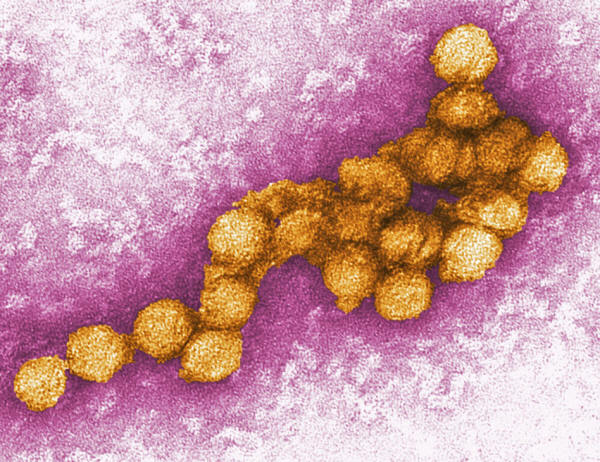|
A digitally colorized transmission electron micrograph (TEM) of the West Nile virus. (Image credit: Cynthia Goldsmith, U.S. Centers for Disease Control and Prevention)
occur annually?
And is it true that the vaccinated person will experience it his entire life, compared to an
unvaccinated
person?
Seasonal changes bring about humidity and
temperature changes which increase bioactive functions of cells,
through moisture and/or oxygen absorption.
Bacterium also increases during colder months, as they flourish in the blood due to a lowered bodily temperature.
The body discards 90 percent of toxins through the skin.
The rest expel via the
bowels, mouth, and mucus membranes. Depending upon the toxicity and
nature of those substances, parasites or fungus may be utilized to
help break them down.
These are called viruses,
They dissolve waste
matter when tissue is too toxic for our living microbes to consume
and eliminate.
Their outer covering is made of a protein coating:
Surfactants are molecules that bond with each other to form sealed bubbles.
This process is carried
out with the guidance of white blood cell antibodies.
Antibodies will bring
matter to the virus as well. Both agents work together as a unit.
If this were not so, we would witness every single person dying from mass cell infection 100 percent of the time; being non-discriminatory, yet, we do not observe this.
Once the virus has broken
down the matter and neutralized it, the body will expel it via the
aforementioned routes.
Remember that each virus created by each cell will contain differing RNA and DNA because each cell in the human body contains minutely different DNA.
Science has claimed in the past that each cell contains the same DNA:
This is one reason why viruses can never be contagious - the
lock-and-key system known as
RNA/DNA would not be compatible between
hosts.
When trees blossom, it is because temperature changes are causing that tree to produce fruit.
A person may experience viral or bacterial detoxifications regularly if they continually toxify their body.
Even in healthy people, we can expect to have mild colds every so often. Bacterial colds are necessary to help us break down toxins we may have picked up from air, food, or water sources.
They also serve to strengthen the overall body...
Such people are more
prone to developing viruses to help them break down such toxicity.
|


